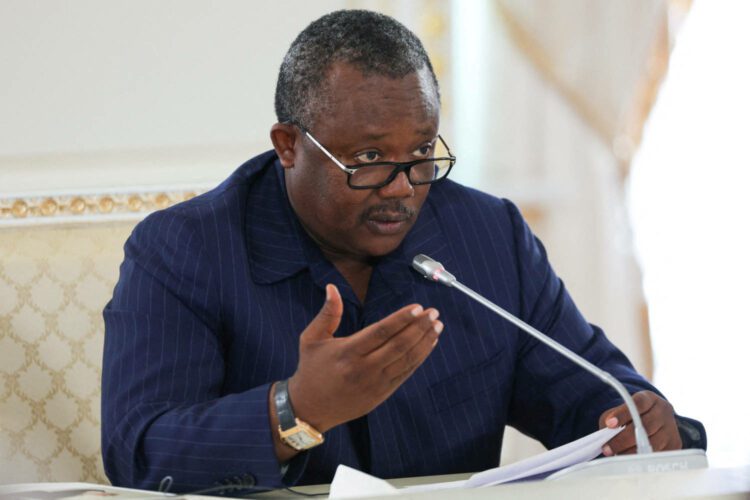In the last couple of days, Kenya witnessed massive youth protests against tax provisions in the Finance Bill, that they argue would make their hard life harder.
It was unlike anything Kenya, or Africa, had seen, because it was driven, in the initial stage, by predominantly cosmopolitan disenfranchised middle and upper working lass youth. It quickly became dabbed the “Gen-Z Protest” and “TikTok Uprising”, after the popular social media platform in which it marinated. As the days went by, it grew bigger, morphing into a broader socio-economic protest as a wider cross-section of urban youth in several towns across the country joined.
The protests came to a particularly violent day on Tuesday, with at least 10 killed and hundreds injured.
Ultimately, they were part of a wider global discussion and contestation about generational wealth, and the distribution of the bounty of this age. Which is why there is a line that can be drawn from Tarek El-Tayeb Mohamed Bouazizi, the Tunisian vendor who set himself on fire in January 2011, sparking off the Arab Spring uprising, to Nairobi.
The uprising roiled North Africa and the Middle East, resulting in the ouster of Tunisian strongman Zine El Abidine Ben Ali on January 14, 2011, and Egypt’s Hosni Mubarak, in power for 30 years, on February 11, 2011. In Libya, where it turned into a bloody rebellion, it ended Muammar Gaddafi’s very long rule of 42 years with his killing on October 20, 2011.
Bouazizi’s self-immolation was in response to the confiscation of his goods, and humiliation by a city official. It blew up into a national protest against economic hardship, and political repression.
The Arab Spring didn’t close out in a new democratic dawn. Egypt ended with a harder autocracy, Tunisia has endured reversals, and Libya ended in hell. It’s momentum remained, though.
Corrupt strongman
Three years later, it landed in Burkina Faso, where soldier-turned civilian, Blaise Compoare, had presided as a corrupt strongman for 27 years. He made moves to extend his rule, and early in October 2014 Burkina Faso was enveloped in the largest pushback protests it had seen in over a generation.
Shopkeepers, students and market women took to the streets to demand Compaore step down. Much like in Egypt in 2011 during the protest against Mubarak, the army opportunistically sat on the fence.
To the sound of masses of women banging cooking pots, Compaore fled into exile. It was not to be a fairy tale ending for Burkina Faso either. Battered by a jihadist rebellion, the civilian government floundered. Then a soldier took over, and then another soldier. Capt Ibrahim Traoré seized power in a coup from a fellow soldier on September 30, 2022, promising to be an interim president. He has since changed his plans, and is hanging around in a permanent capacity for a long while.
Five years later, it was Sudan’s turn. In a protest ignited by women in the highly patriarchal society, in April 2019 Alaa Salah, 22-year-old student, standing on top of a car, dressed in white and gold, and leading a crowd of demonstrators in chant, became a global icon of the Sudanese Revolution against General Omar al-Bashir’s nearly 30-year rule.
The protest against economic conditions, snowballed into a big political and pro-democracy uprising, and ended on April 11 in the ouster and arrest of Bashir. The soldiers remained entrenched, and eventually booted the transition government. Like Libya, the journey has ended in the on-going destructive Sudan civil war between de facto leader Gen Abdel Fattah al-Burhan, and his former ally and co-conspirator, Rapid Support Forces militia leader Mohamed “Hemedti” Dagalo.
In late 2020 it was Nigeria’s turn to have its Spring Moment. Nationwide youth protests broke out against the Special Anti-Robbery Squad (Sars), in what became the #EndSARS Protests.
Notorious police force
The notorious police force had turned into a predatory army against young Nigerians; killing, beating, abducting, and robbing them, including of their cars, on the streets and in their homes. #EndSARS became a broader protest against youth economic marginalisation and political repression. The Nigerian government dissolved the force, but mostly in name.
June 2024, Kenya’s number came up. The ransacking of Parliament, looting, and burning of a legislator’s home were not helpful optics, and might well put off the peaceful elements who, at the start, were even disarming fellow protesters carrying projectiles that might be hurled to harm.
Looking at the events in Kenya from an East African capital, an observer wrapped it up:
“One of the lessons we are learning from election outcomes and protests related to the cost of living throughout the world is that the polycrisis era has generated a fatigue amongst the population. Governments [might have to] find a way to prioritise stability instead of reforms that demand sacrifices.
“Another possible lesson could be the impact of social media in generating new constituencies. It is too early to tell if TikTok has bridged the ethnic divide in Kenya…but it could well be that the shared consciousness generated by social media has become more powerful in connecting the urban youth than ethnic affiliations.”
The author is a journalist, writer, and curator of the “Wall of Great Africans”. Twitter@cobbo3
Source link : https://nation.africa/kenya/blogs-opinion/opinion/kenya-s-gen-z-and-crisis-of-revolution–4671048
Author :
Publish date : 2024-06-26 21:00:00
Copyright for syndicated content belongs to the linked Source.





